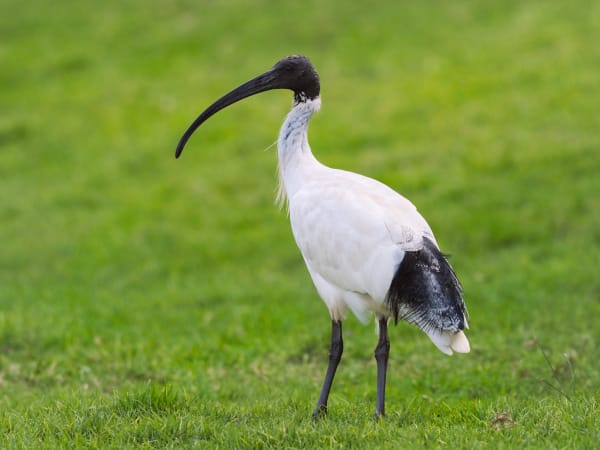A few years ago I made a fool of myself on the internet. This was not the first time and it won’t be the last, but at least it came from a place of wanting to help and not the usual falling down in public, which I am prone to.
If you’ve ever spent any time in Sydney, you’ll see how the Australian White Ibis got its very popular moniker, the ‘bin chicken’. They are everywhere, strutting around from bin to bin, their long bills curved downwards but still seeming pointedly nasty to tourists already feeling skittish from tales of drop bears and funnel webs in your bed.
Growing up, I can’t remember ever seeing one. Those growing up near Lake Illawarra, or around farmland would be well aware of them but, to me, they were one of those creatures that I not only had never seen but had also never even heard about. So I had no real feeling either way about what I now think is a pretty incredible looking bird.
A few years ago, I spent some time photographing them, in their natural environment. They are aquatic birds with their long legs perfect for moving through waterways and mud in search of food. But I hadn’t given that much thought at all. All I saw was one bird amongst the small flock it was with, with what appeared to be horrible, tumour-like lumps all up and down its bill. The bird looked younger than the others, smaller and with more feathers on its head and neck, but otherwise healthy. I anxiously took images, trying to work out what on earth was happening to this poor bird and what I could do to help it. Something with that many ‘growths’ on its bill would likely not survive for long.

So, from naturally aquatic birds, the Ibis is a real example of how some animals can thrive, and then some, in an urban environment. In the wild, they eat mussels, crayfish, locusts, grubs and similar invertebrates. Aside from ‘bin chicken’, they’re also known as the ‘farmer’s friend’ due to their tendency to head to areas troubled by locusts and other pests. But they’ve developed a real taste for our easily accessible food scraps. Several councils around the country have either culled birds or have management programs in place which remove nests or oil eggs to prevent them from hatching.
It’s a bit of a quandary, with numbers of these native birds increasing in urban parks and cities while the populations inland are declining. Macquarie University researchers are studying the genetic difference between those city birds and their country cousins.
And there I was, all those years back, just trying to help out one solitary bird. I posted my photos on a bird page and asked if anyone could help identify what was plaguing this bird. Was it tumours as I suspected? A birth defect? An old injury? Nah, just dried mud from the Ibis doing what the Ibis does, sticking its bill in places in search of food. Well, you live and you learn – and hopefully not make too much of a fool on yourself on the internet.
You can read about the research Macquarie University is doing and see the incredible cartoons on the issue by PhD candidate Skye Davis here






